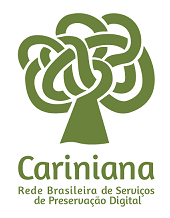Phenotypic traits of equines raised in the Pantanal of Mato Grosso do Sul
DOI:
https://doi.org/10.5433/1679-0359.2015v36n5p3341Palavras-chave:
Biometrics, Equus, Genotypes, Morphology, Pantanal region.Resumo
The primary aim of this study was to characterize the phenotypes of equines raised in the Pantanal region of Mato Grosso do Sul, one of the central-western states of Brazil. Eighteen linear measurements were collected from 498 adult horses belonging to several different breeds, including Pantaneira (n = 52), Arabic (n = 28), Crioulo (n = 31), Mangalarga (n = 8), Quarter Horse (n = 97), Petiço (n = 9), Crossbred Horses (i.e., undetermined breeding; n = 170), and Mules (n = 74). These measurements were compared to similar measurements taken of English Thoroughbreds (n = 14) and Brazilian Equestrians (n = 15) in the city of Campo Grande, the capital of Mato Grasso do Sul. We used analysis of variance to test the influence of several factors, including genetic group, category (horse or mule), sex, and their interactive effects, on phenotypic characteristics. Correlation estimates verified the Euclidean distance between genetic groups categorized via cluster analysis. The effects were significant (P < 0.05) for many of the phenotypic characteristics. Horses showed higher values for most of the measurements compared to mules, except for the length of the head, lumbar back length, and cannon bone circumference, as well as greater correlation between weight and heart girth (r = 0.98). Cluster analysis determined that the animals were categorized into nine groups, with 10 distinct populations. Correspondence analysis showed that the Crioulo, Crossbred Horses, Mules, Pantaneiro, and Mangalarga breeds were less distinct phenotypically. The Petiço breed was not grouped, whereas Quarter Horses, English Thoroughbreds, and Brazilian Equestrians were more phenotypically distinct from the other breeds.
Downloads
Downloads
Publicado
Como Citar
Edição
Seção
Licença

Este trabalho está licenciado sob uma licença Creative Commons Attribution-NonCommercial 4.0 International License.
Semina: Ciências Agrárias adota para suas publicações a licença CC-BY-NC, sendo os direitos autorais do autor, em casos de republicação recomendamos aos autores a indicação de primeira publicação nesta revista.
Esta licença permite copiar e redistribuir o material em qualquer meio ou formato, remixar, transformar e desenvolver o material, desde que não seja para fins comerciais. E deve-se atribuir o devido crédito ao criador.
As opiniões emitidas pelos autores dos artigos são de sua exclusiva responsabilidade.
A revista se reserva o direito de efetuar, nos originais, alterações de ordem normativa, ortográfica e gramatical, com vistas a manter o padrão culto da língua e a credibilidade do veículo. Respeitará, no entanto, o estilo de escrever dos autores. Alterações, correções ou sugestões de ordem conceitual serão encaminhadas aos autores, quando necessário.
















